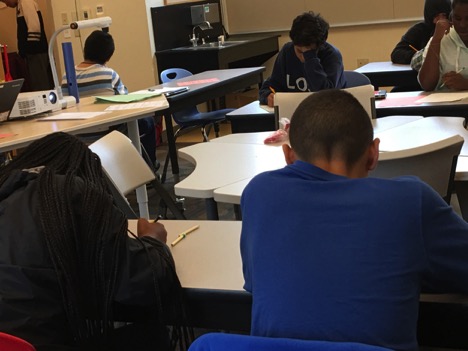According to Daniel J. Siegel, clinical professor of psychiatry at the UCLA School of Medicine, and the author of the book Brainstorm: The Power and Purpose of the Teenage Brain, the adolescent age may be best understood as, “an essential time of emotional intensity, social engagement, and creativity” (Siegel 4). Between the ages of 12 and 24 years old, the brain undergoes drastic neurological changes that alter an individual’s perception of life—this is the adolescent age.
Daniel J. Siegel suggests that we begin by familiarizing ourselves with the adolescent process to lessen our hostility towards it. Generally, there are four results that come from the brain’s changes during adolescence: Emotional Spark, Social Engagement, Novelty, and Creative Explorations. Daniel J. Siegel groups these four changes into the acronym “ES-SE-N-CE,” or “Adol-ESSENCE.”
Emotional Spark refers to the enhanced dopamine release that adolescents experience during the beginning and middle stages of adolescence. This enhanced dopamine release during adolescence translates into behaviors that seek out rewards. Behaviors during adolescence are rooted in the emotional drive that arises from dopamine release and the gratification experienced by being rewarded. Interconnected with the adolescent Emotional Spark is Social Engagement. Social engagement speaks to the adolescent’s ability to create meaningful social connections. This means that an adolescent has the potential to create a long-lasting connection with a mentor, especially if adequately rewarded. However, most adolescents do not find mentors whom they connect with and learn from, so most adolescent social connections are made with fellow adolescents who are also thrill-seeking juveniles.
Novelty, the third change that takes place during adolescence, refers to the adolescent’s desire to try new behaviors with the intent to seek out new methods of being rewarded. As a result of Novelty, adolescents are led to live life on the edge, finding reward in simply surviving their edgy lifestyle. The last of the changes is Creative Explorations, which refers to the adolescent’s new-found ability to question authority and established rules. This new insight into abstract thinking leads to creative explorations that question and challenge the status quo, as well as provide dynamic solutions to social issues.
The adolescent age is a time of intense exploration that defies moral and social parameters. This period of intense exploration is constantly misinterpreted by adults (and by children) as outright disobedience and rebellion. Confronted by the adolescent age, most adults jump on guard, instinctively moving to tame the adolescent. The result is always the same: an indefinite power struggle between adults and adolescents.
What if, instead of attempting to tame the adolescent mind, adults learn from, and work with individuals who are taking part in this innovative period? The adolescent brain reaches peak innovation and creativity, both of which are aspects that keep our world from falling into a boring runaround of events. If instead of rejecting, we learn to work with the adolescent mind, we can end power struggles in homes, in classrooms, and in the streets. We can benefit from our adolescents’ ability to explore new solutions to world problems, and our adolescents will benefit from an inclusive society that welcomes the adolescent age without hesitation.
Robel Espino
Latest posts by Robel Espino (see all)
- Parte 2, Explorando las Ideas de Jeffrey Duncan-Andrade: La Política y la Economía del Fracaso - December 18, 2019
- Part 2, Exploring Jeffrey Duncan-Andrade’s Ideas:The Politics and Economics of Failure - December 16, 2019
- Explorando Las Ideas de Jeffrey Duncan-Andrade, Parte 1: El Sistema de Educación Urbana, No Está Fallando - December 3, 2019
- Exploring Jeffrey Duncan-Andrade’s Ideas, Part 1: The Urban Education System Is Not Failing - November 26, 2019
- Estudio Sugiere Que las Lecturas en el Aula No Son Muy Efectivas, Pero Mis Alumnos y Yo las Amamos - November 22, 2019

